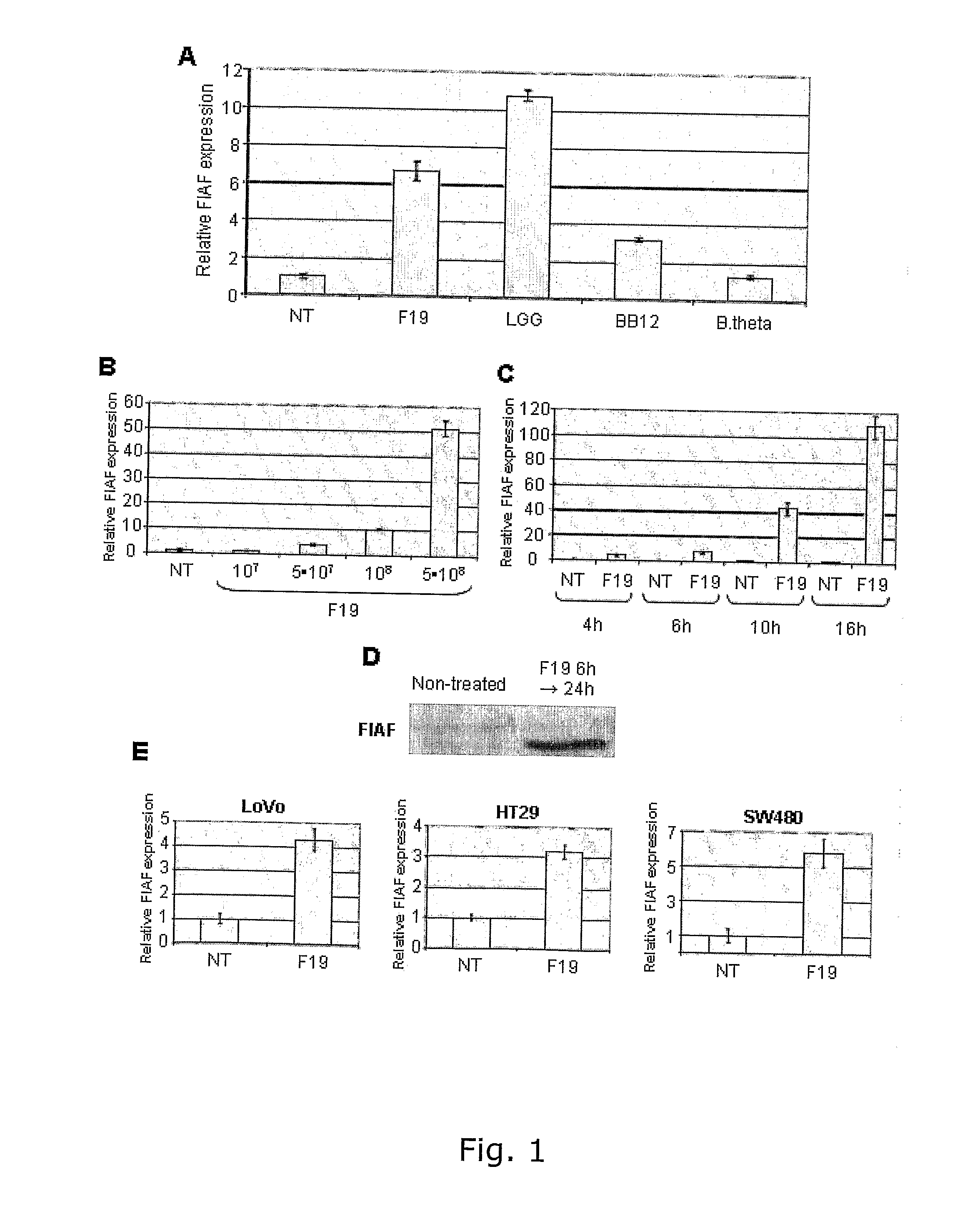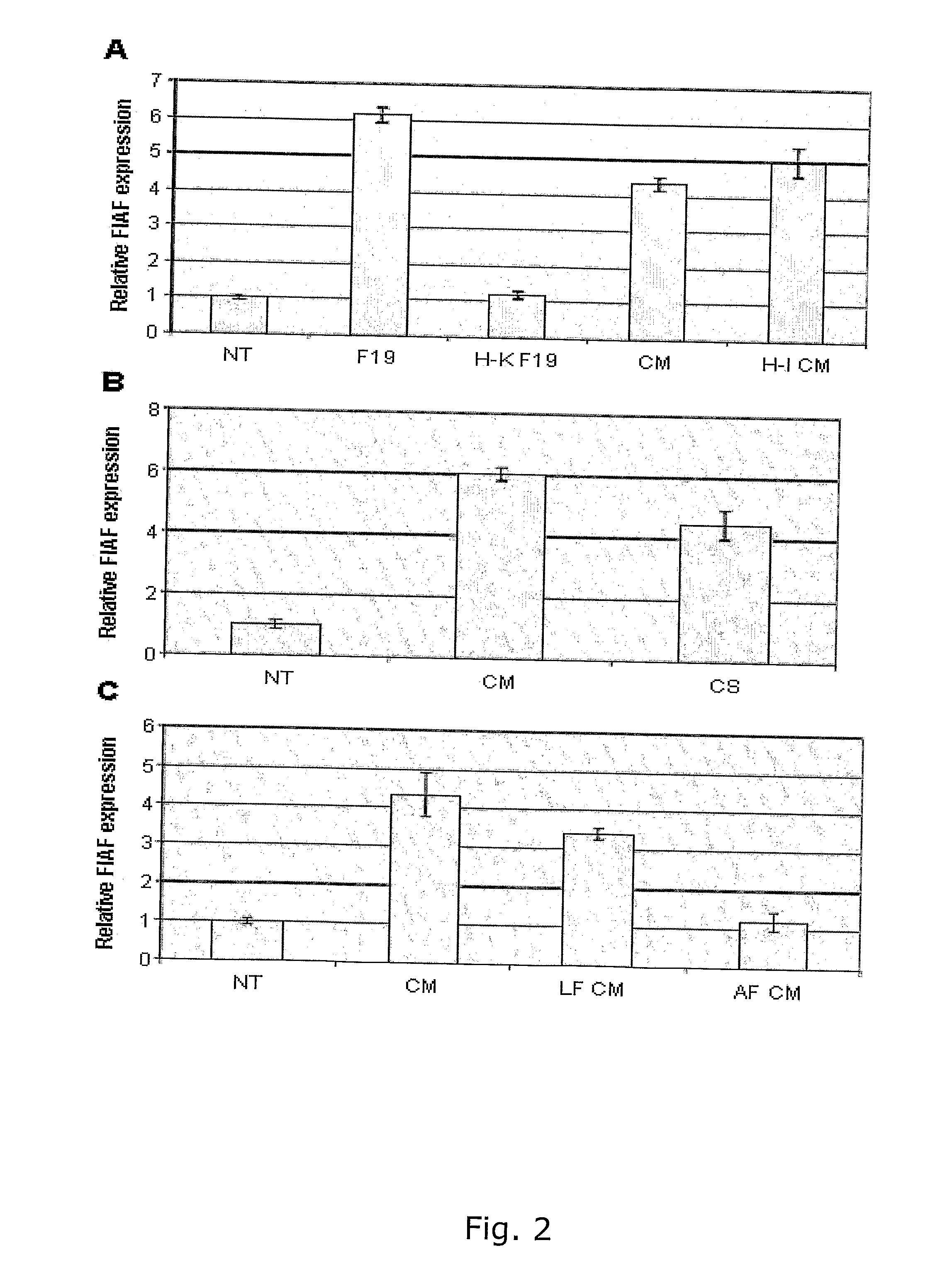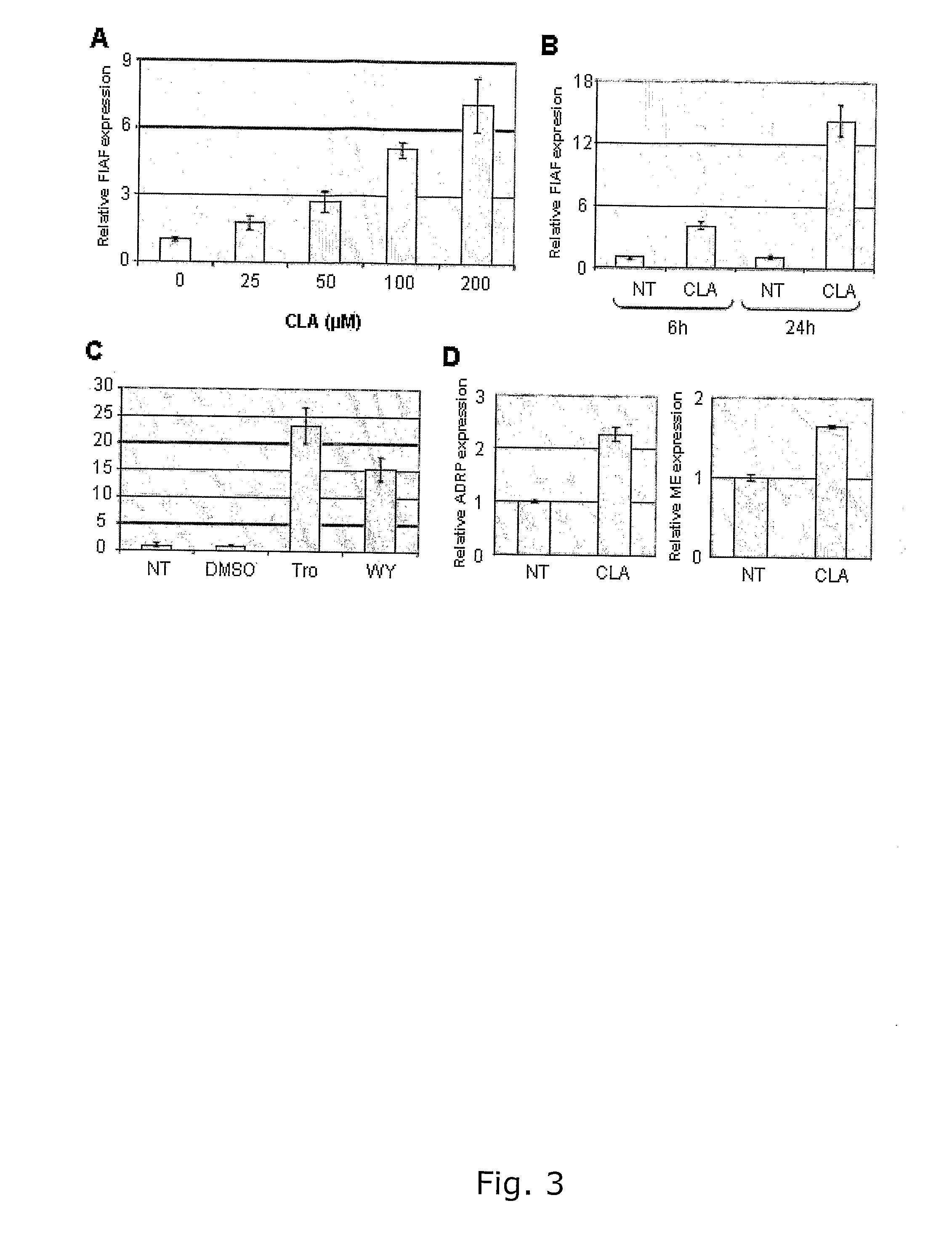Probiotic bacteria and regulation of fat storage
a technology of probiotic bacteria and fat storage, applied in the direction of bacteria material medical ingredients, drug compositions, metabolic disorders, etc., can solve the problems of increasing satiety, reducing food intake, and physiology of fasting, so as to reduce the uptake of triglyceride-derived fatty acids and increase shelf life
- Summary
- Abstract
- Description
- Claims
- Application Information
AI Technical Summary
Benefits of technology
Problems solved by technology
Method used
Image
Examples
example 1
[0157]The purpose of the present study was to investigate whether or not a single, probiotic strain can be used to modulate host physiology and / or manipulate floral composition to an anti-obesity favourable state.
[0158]Thus, this example shows the results of the investigation of the expression of FIAF as a function of one strain of probiotics as a contrast to full flora, in the colonic cell line HCT116. The probiotic employed is the Lactobacillus paracasei subsp. paracasei F19, which is a Gram-positive, non-spore forming, rod shaped bacterium initially isolated from human faeces. The results show that FIAF expression can be induced by F19 along with other probiotic strains as opposed to the common commensal B. thetaiotaomicron, which is in line with reported inability of whole flora to increase FIAF expression in other studies.
1.1. Materials and Methods
Mice, Cell Lines and Reagents
[0159]All animal experiments were approved by the ethical committee in Stockholm, Sweden. Ten-twelve we...
example 2
[0181]As shown in the above Example 1, is Lactobacillus strain F19 capable, in contrast to a whole flora, to increase FIAF content in both colonic cell lines and serum of monocolonized mice resulting in decreased fat storage. Furthermore, it was shown that cell-bacteria contact is not required for the upregulation of FIAF, as media of F19-cultures (conditioned media or supernatant) alone is capable of driving said expression (these results are summarized in FIG. 7). The fact that F19 does not require cell-bacteria contact increases its potential as a part of an industrial setting on a high-throughput scale. Strain F19 grown in culture medium alone is equally capable of producing the factor and thus offers an attractive practical benefit when translated to industrial equipment. Therefore, the active component of F19 secretions was further characterized by a number of different approaches in order to evaluate the possibilities of using this factor in a natural remedy, a dietary supple...
example 3
[0195]The ability of F19 to produce the factor in milk or juice based matrices is tested along with the potential of increased shelf life. This is performed to confirm that the stability of the secreted factor is increased when changing the environment due to removal of unfavorable inherent and / or heat inactivated constituents. F19 is cultured in two types of media, a milk-based medium (milk with an addition of 0.1% yeast extract that has been treated at 95° C. for 10 minutes before addition of bacteria) and a whey-based medium (whey with an addition of 0.1% yeast extract) in order to accumulate the factor prior to heat treatment. The medium is fermented at 37° C. for 16 hours. The supernatant from the different media is prepared by centrifugation and the supernatant is collected. The supernatant from the medium with the bacteria is heat treated to inactivate the bacteria before addition to the cell line. Alterations in the factor activity on FIAF expression in cells is assayed thro...
PUM
 Login to View More
Login to View More Abstract
Description
Claims
Application Information
 Login to View More
Login to View More - R&D
- Intellectual Property
- Life Sciences
- Materials
- Tech Scout
- Unparalleled Data Quality
- Higher Quality Content
- 60% Fewer Hallucinations
Browse by: Latest US Patents, China's latest patents, Technical Efficacy Thesaurus, Application Domain, Technology Topic, Popular Technical Reports.
© 2025 PatSnap. All rights reserved.Legal|Privacy policy|Modern Slavery Act Transparency Statement|Sitemap|About US| Contact US: help@patsnap.com



